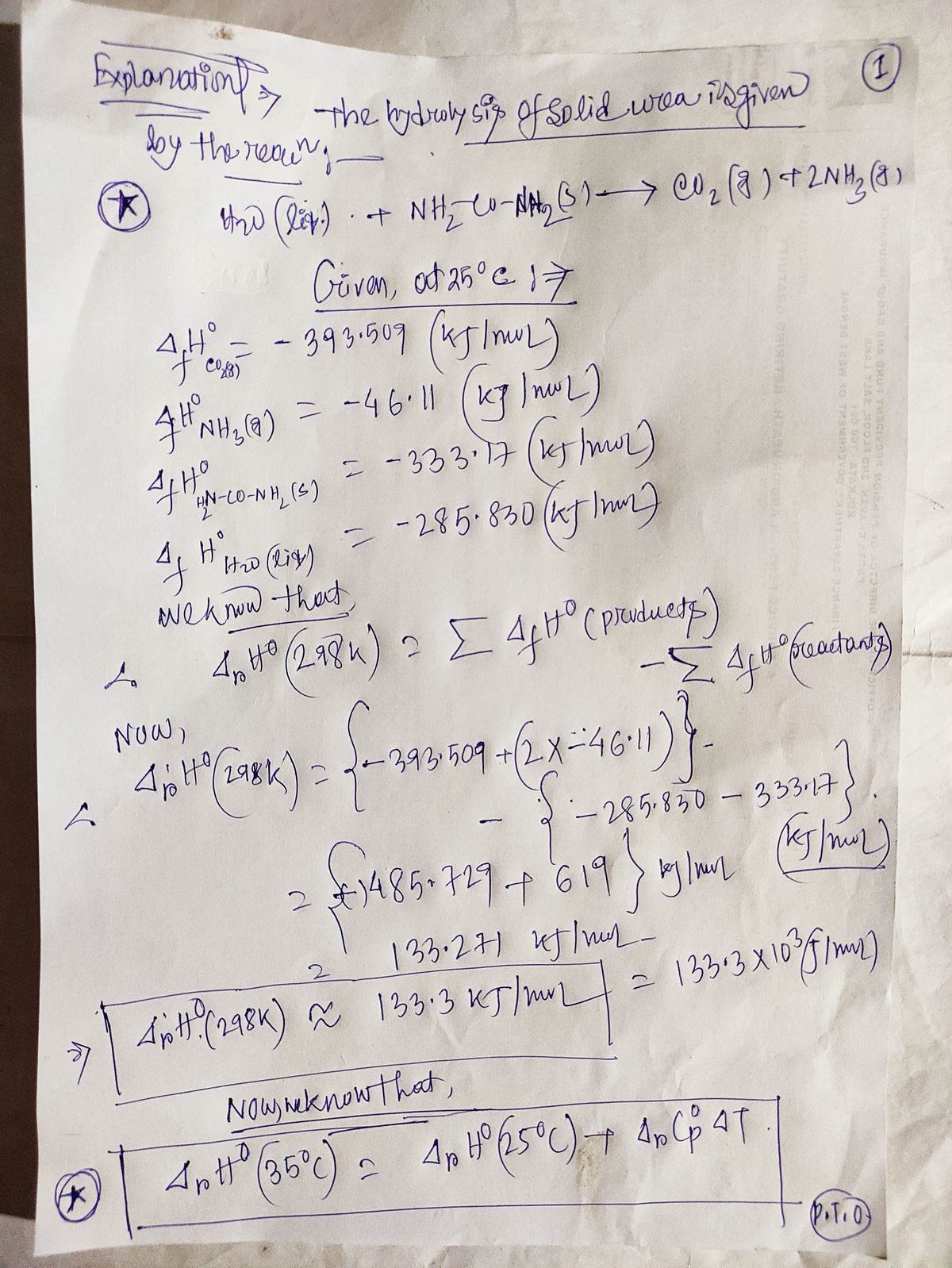10) The hydrolysis of solid urea is given by the reaction H₂O(liq) + H₂NCONH2(s) → CO2(g) + 2NH3(g) Calculate A, Hº for the hydrolysis of urea at 35 °C and 1.0 bar. Some information at 25 °C in the table below may be useful. State any assumptions that you make in your work. Substance CO(g) CO₂(g) H₂NCONH₂ (s) H₂O(g) H₂O(liq) N₂(g) NH3(g) Af Hº (kJ mol-¹) S (J K-¹ mol-¹) Cp,m (J K-¹ mol-¹) -110.525 197.674 29.0 -393.509 213.74 37.1 -333.17 104.60 92.7 -241.818 188.825 33.76 -285.830 69.91 75.4 0.0 191.61 29.124 -46.11 192.45 35.06
Thermochemistry
Thermochemistry can be considered as a branch of thermodynamics that deals with the connections between warmth, work, and various types of energy, formed because of different synthetic and actual cycles. Thermochemistry describes the energy changes that occur as a result of reactions or chemical changes in a substance.
Exergonic Reaction
The term exergonic is derived from the Greek word in which ‘ergon’ means work and exergonic means ‘work outside’. Exergonic reactions releases work energy. Exergonic reactions are different from exothermic reactions, the one that releases only heat energy during the course of the reaction. So, exothermic reaction is one type of exergonic reaction. Exergonic reaction releases work energy in different forms like heat, light or sound. For example, a glow stick releases light making that an exergonic reaction and not an exothermic reaction since no heat is released. Even endothermic reactions at very high temperature are exergonic.
Can I get the solution


Trending now
This is a popular solution!
Step by step
Solved in 2 steps with 2 images









